In a world where climate extremes are becoming more prevalent, the demand for kitchen appliances that can withstand frigid temperatures is on the rise. The introduction of -30°C cold resistant models has marked a significant shift in the kitchen appliance industry, offering consumers a new level of reliability and versatility. This article delves into the intricacies of these innovative appliances, exploring their features, market trends, consumer preferences, and the challenges and solutions involved in their manufacturing. As we look to the future, we also examine the potential growth of the -30°C cold resistant kitchen appliance market and the implications it holds for both manufacturers and consumers alike.
The Rise of Cold-Resistant Kitchen Appliances: A Game-Changer for European and American Markets
In recent years, there’s been a significant shift in the kitchen appliance industry, with cold-resistant models emerging as a game-changer in European and American markets. These appliances, designed to withstand extreme temperatures down to -30°C, are not just a novelty; they’re a necessity for many consumers.
These cold-resistant kitchen appliances are a direct response to the changing climate patterns, which have led to colder winters and more unpredictable weather conditions. In Europe, particularly, where the cold snap can be severe, homeowners are increasingly looking for appliances that can endure harsh temperatures without compromising on performance.
One of the most notable aspects of these cold-resistant models is their robust construction. They are often built with high-quality materials and advanced insulation technologies that ensure they remain reliable even in extreme conditions. This not only extends the lifespan of the appliance but also provides peace of mind to consumers who want to avoid the inconvenience and expense of frequent repairs or replacements.
The European market, with its diverse climate, has been a hotbed for innovation in cold-resistant appliances. From fridges and freezers to dishwashers and ovens, manufacturers are racing to develop products that can maintain optimal temperatures in the coldest of settings. The demand for these appliances has been particularly strong in regions like Scandinavia, where sub-zero temperatures are the norm.
In the United States, the trend towards cold-resistant kitchen appliances is also gaining momentum. While the US climate is generally milder, there are areas, especially in the northern states, where extreme cold can be a concern. Consumers in these regions are eager to invest in appliances that can perform without faltering, regardless of the weather.
The technological advancements behind these cold-resistant models are nothing short of remarkable. Modern refrigerators, for example, are equipped with smart sensors that monitor internal temperatures and adjust cooling cycles accordingly. This ensures that food remains fresh and energy consumption is optimized, even when the outside temperature plummets.
Similarly, dishwashers are now designed with heating elements that can quickly raise the water temperature to ensure effective cleaning, even in cold water. Ovens, too, have been enhanced with insulation and heat retention features that prevent cold air from seeping in and maintain the desired cooking temperature.
Another factor driving the popularity of cold-resistant appliances is the growing trend towards energy efficiency. Consumers are more environmentally conscious than ever before, and they’re seeking out appliances that not only perform well but also do so with minimal environmental impact. Cold-resistant models often come with energy-saving features that reduce utility bills and carbon footprints.
Despite the numerous benefits, there are challenges to be addressed. The cost of manufacturing these appliances can be higher due to the specialized materials and technologies required. Additionally, the logistics of distribution and installation can be more complex, especially in remote or rural areas where infrastructure may be limited.
However, as the market continues to grow, manufacturers are finding ways to overcome these challenges. They’re streamlining production processes, exploring new materials, and developing innovative solutions that make cold-resistant appliances more accessible to a wider range of consumers.
Looking ahead, the future of cold-resistant kitchen appliances looks bright. With climate change a pressing issue, and the demand for resilience in appliances on the rise, these products are poised to become a standard feature in homes across Europe and America. As technology advances and consumer needs evolve, we can expect to see even more sophisticated cold-resistant models hitting the market, bringing comfort and efficiency to households in even the coldest climates.
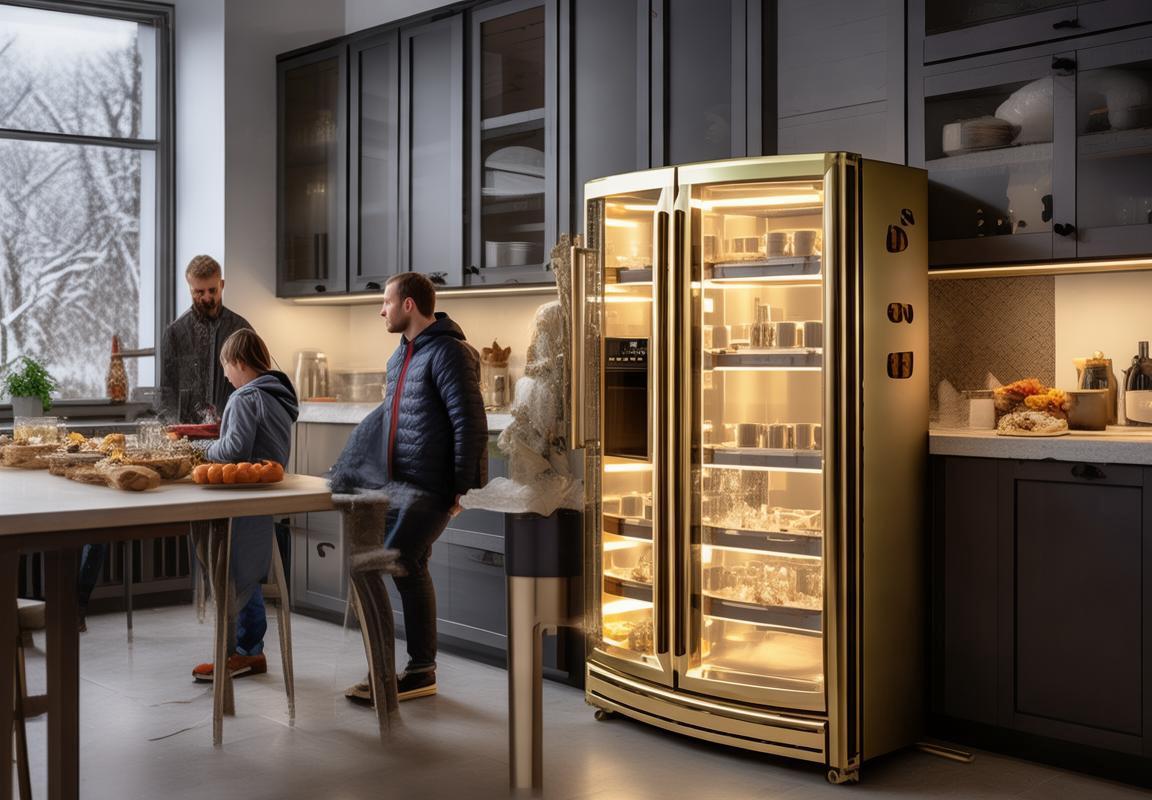
Understanding the Need for -30°C Cold Resistant Models
The demand for kitchen appliances that can withstand extreme temperatures has surged, particularly in Europe and North America. Central to this trend is the emergence of -30°C cold resistant models, which are becoming increasingly popular among consumers. These appliances are not just a luxury but a necessity in regions where the climate can dip drastically below freezing.
In colder climates, the durability of kitchen appliances is paramount. Freezing temperatures can wreak havoc on conventional appliances, leading to malfunctions and costly repairs. -30°C cold resistant models are engineered to withstand such extreme conditions, ensuring that they remain reliable and efficient throughout the year.
The materials used in these appliances are a key factor in their ability to operate in sub-zero temperatures. High-quality stainless steel, reinforced plastics, and advanced insulation are some of the components that contribute to their resilience. These materials not only protect the appliance from the cold but also maintain their structural integrity over time.
Another crucial aspect is the insulation. Modern -30°C cold resistant models are equipped with superior insulation to prevent cold air from seeping into the appliance and affecting its performance. This not only keeps the appliance running smoothly but also helps in energy conservation, a significant concern for environmentally conscious consumers.
The European market, known for its preference for high-quality products, has embraced -30°C cold resistant models wholeheartedly. This trend is partly driven by the region’s diverse climate, which includes countries with severe winters. In countries like Sweden, Norway, and Finland, where temperatures can plummet to -30°C, these appliances are a must-have.
In the United States, particularly in states like Alaska and Minnesota, the need for cold-resistant kitchen appliances is equally pressing. The northern states experience some of the harshest winters, and residents are increasingly seeking appliances that can withstand such extreme conditions.
Consumers are not just looking for appliances that can survive the cold; they are also seeking those that can maintain their performance. -30°C cold resistant models are designed to operate at peak efficiency even in freezing temperatures. This means that everything from the refrigerator to the dishwasher can function without any compromise in quality or speed.
One of the most popular applications of -30°C cold resistant appliances is in outdoor kitchens or in homes with outdoor living spaces. These models are ideal for use in pergolas, patios, or even garages, where they can be exposed to cold weather without any risk of damage. This versatility has made them a favorite among homeowners looking to enhance their outdoor entertaining areas.
Moreover, the rise of -30°C cold resistant models is also a testament to the evolving expectations of consumers. People are no longer satisfied with appliances that merely perform their basic functions; they want products that can adapt to their lifestyle and environment. This demand for adaptability has spurred innovation in the appliance industry, leading to the development of these specialized cold-resistant models.
In terms of market growth, the demand for -30°C cold resistant appliances has been on the rise, with sales figures reflecting this trend. Retailers and manufacturers have taken notice, and many are now focusing on expanding their ranges to include these specialized models. This expansion is not only beneficial for consumers but also for the industry as a whole, as it opens up new opportunities for growth and innovation.
However, the production of -30°C cold resistant appliances also comes with its own set of challenges. The cost of materials and the specialized engineering required to create these appliances can be higher than that of standard models. Despite this, the benefits they offer in terms of reliability and performance make them a worthwhile investment for many consumers.
In conclusion, the need for -30°C cold resistant models is a direct response to the demands of consumers in colder climates. These appliances are not just a testament to the advancements in technology and materials but also to the changing expectations of consumers who seek products that can adapt to their unique lifestyle and environment. As the popularity of these models continues to grow, it’s clear that they are here to stay, reshaping the landscape of the kitchen appliance market in Europe and North America.

Key Features of -30°C Cold Resistant Kitchen Appliances
In the evolving landscape of kitchen appliances, the development of models that can withstand extreme temperatures has become a pivotal advancement. These -30°C cold resistant appliances are not just a novelty; they are a necessity, especially in regions where the cold can be relentless. Here are some of the key features that make these appliances stand out:
-
Advanced Insulation: To maintain a stable interior temperature at -30°C, these appliances are equipped with cutting-edge insulation materials. This not only keeps the cold out but also prevents any internal warmth from escaping, ensuring that the contents remain frozen even during power outages.
-
Thermal Sealing: The doors and panels of these cold-resistant models are designed with precision thermal seals. These seals prevent cold air from leaking out and warm air from seeping in, maintaining the integrity of the freezing environment.
-
Robust Refrigeration Systems: The refrigeration units in -30°C cold resistant appliances are built to handle the extreme temperatures. They often feature high-capacity compressors and coils that are specifically engineered to work efficiently at low temperatures without compromising on performance.
-
Smart Controls: These appliances come with sophisticated control systems that allow users to monitor and adjust the internal temperature remotely. Smart technology integration ensures that the appliance can adapt to changing conditions and maintain the desired cold temperature.
-
Durable Materials: The construction of these appliances is a blend of high-quality, durable materials that can withstand the rigors of extreme cold. Stainless steel, reinforced plastics, and robust hinges are common components that contribute to the appliance’s longevity.
-
Safety Features: Safety is paramount in these appliances, with features like automatic defrosting systems to prevent ice buildup, which can obstruct the cooling process. They also often include child locks and temperature alarms to provide an added layer of security.
-
Energy Efficiency: Despite the extreme conditions they are designed to handle, -30°C cold resistant appliances are designed to be energy-efficient. Advanced insulation and efficient refrigeration systems help to minimize energy consumption, making them cost-effective in the long run.
-
Wide Range of Applications: These appliances are not limited to residential use. They are also highly sought after in commercial settings, such as restaurants, hotels, and even in food storage facilities where maintaining low temperatures is critical.
-
Customizable Storage Solutions: Many models offer customizable storage options, allowing users to organize their frozen goods efficiently. This can include adjustable shelves, sliding drawers, and even vacuum-seal capabilities to maximize storage space and preserve food quality.
-
Eco-Friendly Design: With the growing emphasis on sustainability, these appliances are often designed with eco-friendly materials and practices in mind. This includes the use of recyclable materials and the reduction of harmful chemicals in the manufacturing process.
-
Maintenance and Service: Given their specialized design, -30°C cold resistant appliances require specific maintenance to ensure they continue to function optimally. Manufacturers typically offer comprehensive service packages and replacement parts to support these models.
-
Cost-Effectiveness: While the initial cost of these appliances may be higher than standard models, the long-term savings on energy bills and the extended lifespan of the appliance can make them a cost-effective investment.
In summary, the key features of -30°C cold resistant kitchen appliances are a testament to modern engineering and design. They are not just built to withstand extreme cold but to do so efficiently, safely, and with a consideration for the environment and user convenience. As the demand for reliable and robust cooling solutions continues to grow, these appliances are poised to become a staple in both residential and commercial kitchens worldwide.
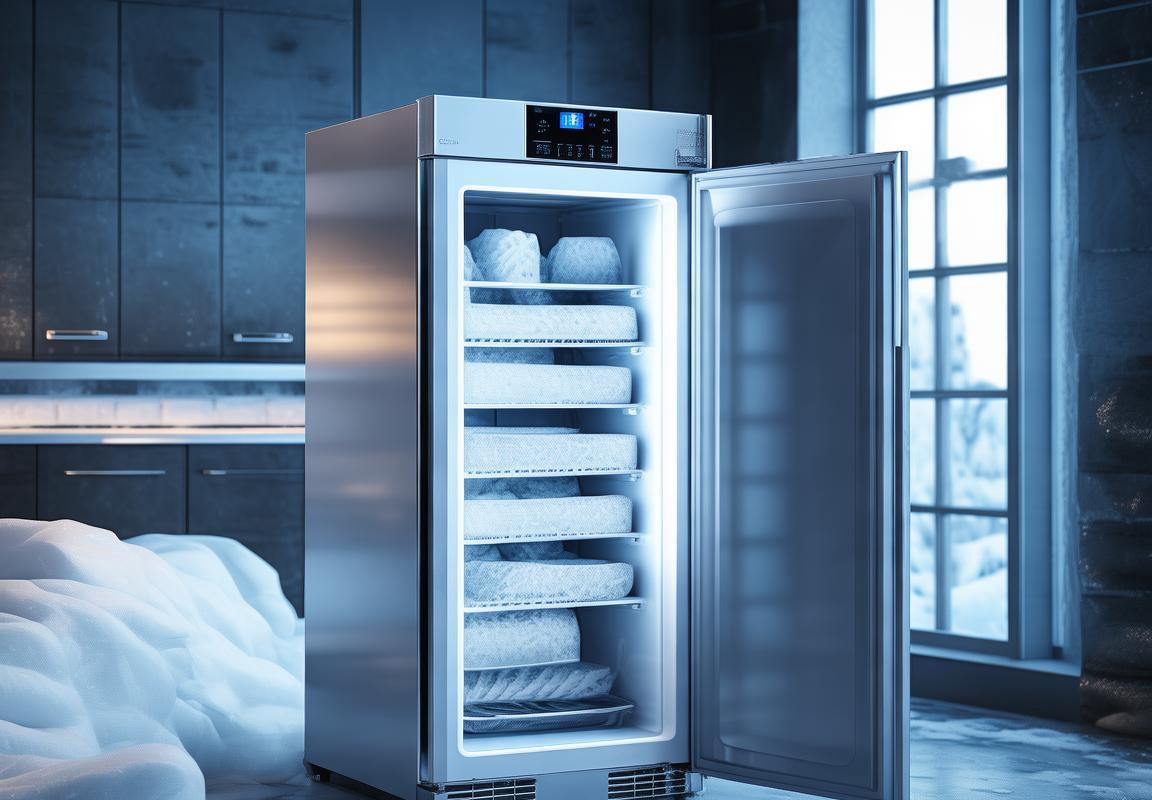
Market Trends in Europe and North America: A Comparative Analysis
The European and North American markets for kitchen appliances have been witnessing distinct trends, shaped by various factors such as climate, consumer habits, and technological advancements. Here’s a comparative analysis of the market trends in these regions:
In Europe, the kitchen appliance market is heavily influenced by the continent’s diverse climates, which range from the frigid winters of Scandinavian countries to the more temperate climates in Southern Europe. This diversity has led to a demand for appliances that can withstand extreme temperatures, including models designed for -30°C conditions. These cold-resistant models are not just for show; they’re a necessity for households in regions where freezing temperatures are the norm.
North America, on the other hand, experiences a wider range of climates, from the deep freezes of the northern states to the mild winters of the southern regions. While the demand for -30°C cold-resistant appliances is not as high as in Europe, there is still a significant market for models that can handle colder conditions, particularly in the northern states.
One key trend in both Europe and North America is the increasing preference for energy-efficient appliances. In Europe, this is largely due to stricter energy regulations and the push for sustainability. In North America, while regulations are less stringent, consumers are increasingly aware of the environmental impact of their purchases and are choosing energy-saving appliances accordingly.
The design of kitchen appliances in both regions is also evolving. There’s a noticeable shift towards sleeker, more modern aesthetics that blend seamlessly into kitchen interiors. This trend is driven by both design-conscious consumers and the desire for smart appliances that can enhance the overall kitchen experience.
In Europe, smart kitchen appliances have been gaining traction for some time, driven by the integration of technology into daily life. Smart features like remote control, connectivity to home automation systems, and even AI-powered functionalities are becoming standard in many models. In North America, while the market is catching up, the adoption rate is still growing, and manufacturers are racing to offer the latest technological innovations.
Climate also plays a significant role in the types of appliances preferred in each region. In Europe, where freezing temperatures are common, frost-free refrigerators and freezers are a must-have. These models prevent the buildup of ice, ensuring that food stays fresh longer and reducing the need for manual defrosting. In North America, while frost-free models are popular, the demand for traditional defrost models remains high, especially in areas with milder winters.
Another interesting trend is the rise of specialty appliances in both Europe and North America. These include everything from sous-vide cookers to high-speed blenders. In Europe, the focus is often on health and wellness, with a growing number of appliances designed to promote healthy eating habits. In North America, there’s a strong focus on convenience and quick meal preparation, with appliances like countertop ovens and multi-functional cooktops becoming increasingly popular.
The way appliances are sold and distributed is also changing. Online sales have seen a surge in both regions, with more consumers opting to purchase appliances through e-commerce platforms. This shift has been accelerated by the pandemic, which forced many retailers to move their operations online. Both Europe and North America are seeing a shift towards direct-to-consumer sales models, with manufacturers increasingly offering their own online stores.
In conclusion, while there are similarities in the market trends for kitchen appliances in Europe and North America, the specific needs and preferences of consumers in each region are distinct. Europe’s diverse climates necessitate a focus on cold-resistant models, while North America’s varied geography and consumer habits lead to a more balanced market that includes both energy efficiency and technological innovation. As both regions continue to evolve, the kitchen appliance market is poised to adapt, offering consumers a wide range of options to suit their individual needs.
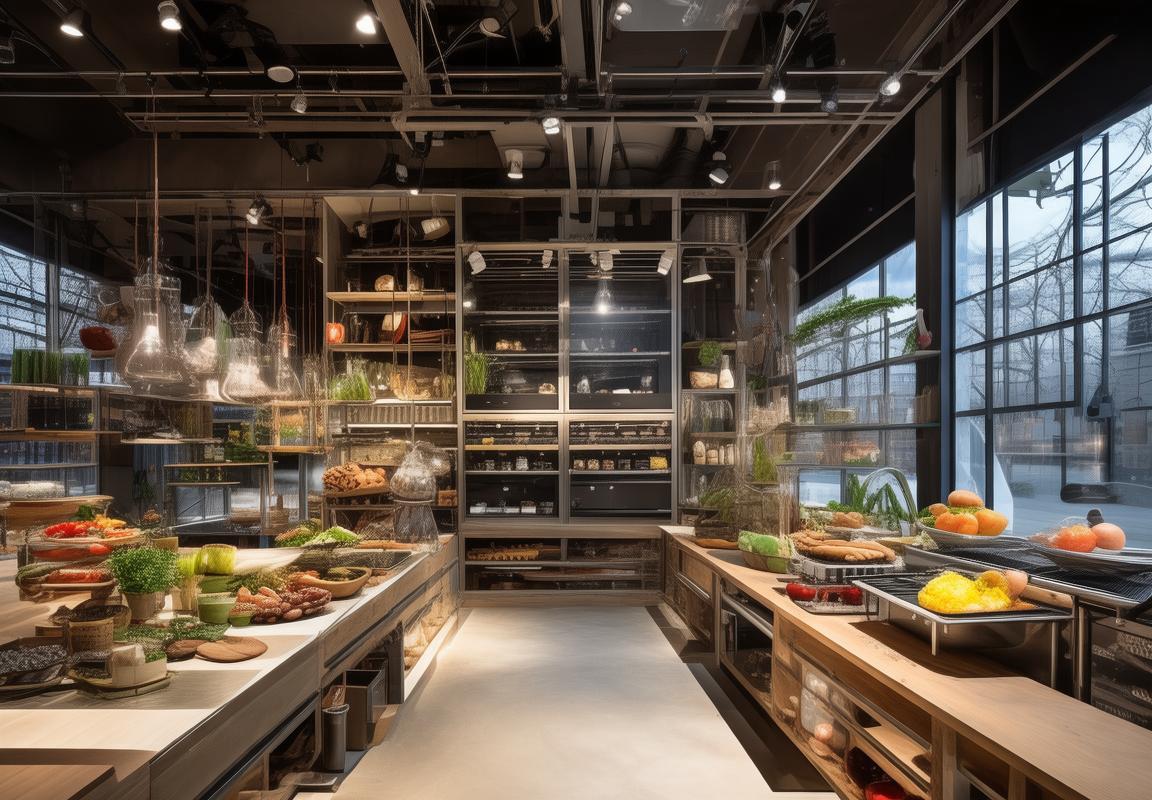
Consumer Preferences and the Role of Innovation
In the ever-evolving landscape of kitchen appliances, consumer preferences are at the heart of innovation. As tastes and needs shift, manufacturers are responding with cutting-edge solutions that cater to these changing demands. Here’s a closer look at how consumer preferences are shaping the role of innovation in the kitchen appliance industry.
Home cooks today are more health-conscious than ever before. The rise of clean eating and homemade meals has spurred a demand for appliances that support healthier cooking methods. From pressure cookers that preserve nutrients to multi-functional ovens that offer a variety of cooking options, appliances that encourage healthier lifestyles are becoming increasingly popular.
The convenience factor plays a significant role in consumer preferences. Busy lifestyles have led to a surge in demand for appliances that save time and effort. Smart refrigerators that offer grocery lists and meal planning, or dishwashers that can be controlled through a smartphone app, are not just luxury items but essential for many consumers. Innovation in this area is focused on making cooking and cleaning as effortless as possible.
Energy efficiency is a growing concern for consumers. With rising energy costs and an increased awareness of environmental impact, appliances that are energy-saving have a clear advantage. This has led to the development of appliances with advanced insulation, LED lighting, and programmable settings that optimize energy use. As consumers become more environmentally conscious, these features are becoming non-negotiable.
Modern consumers are not just looking for functionality; they are seeking appliances that complement their home’s aesthetic. Kitchen appliances that blend in with kitchen decor or offer customizable finishes are gaining traction. The rise of sleek, minimalist designs and smart appliances that have a modern edge reflects a shift towards appliances that are not just utilitarian but also stylish.
Customization and personalization are also key factors. Many consumers are looking for appliances that can be tailored to their specific needs and preferences. This could mean choosing between different sizes, colors, or even functionalities. Appliance manufacturers are responding with modular designs and customizable features that allow customers to create a kitchen that’s uniquely theirs.
Safety is a paramount concern for all consumers, and this has driven a wave of innovation in appliance safety features. From child locks to automatic shut-offs, appliances that prioritize safety are becoming standard. Consumers are more likely to invest in a product that offers peace of mind, knowing that their families are protected.
The integration of technology in kitchen appliances has been transformative. Smart appliances that can connect to the internet and home automation systems are not just convenient but also provide data that can help consumers make better decisions about their energy use and food preparation. This tech-forward approach is appealing to consumers who are excited about the possibilities of the smart home.
Innovation in the kitchen appliance industry is also driven by sustainability. As consumers become more aware of the environmental impact of their purchases, there’s a growing demand for appliances that are eco-friendly and made from sustainable materials. This includes appliances that are recyclable at the end of their life cycle and those that are designed to reduce waste.
Ultimately, consumer preferences are the driving force behind the innovation in the kitchen appliance industry. As these preferences continue to evolve, so too will the products that cater to them. The key for manufacturers is to stay attuned to these shifts and to continue to push the boundaries of what’s possible in kitchen technology. Whether it’s through health-focused features, energy-saving technologies, or smart connectivity, the role of innovation is clear: to meet and exceed the expectations of the modern consumer.
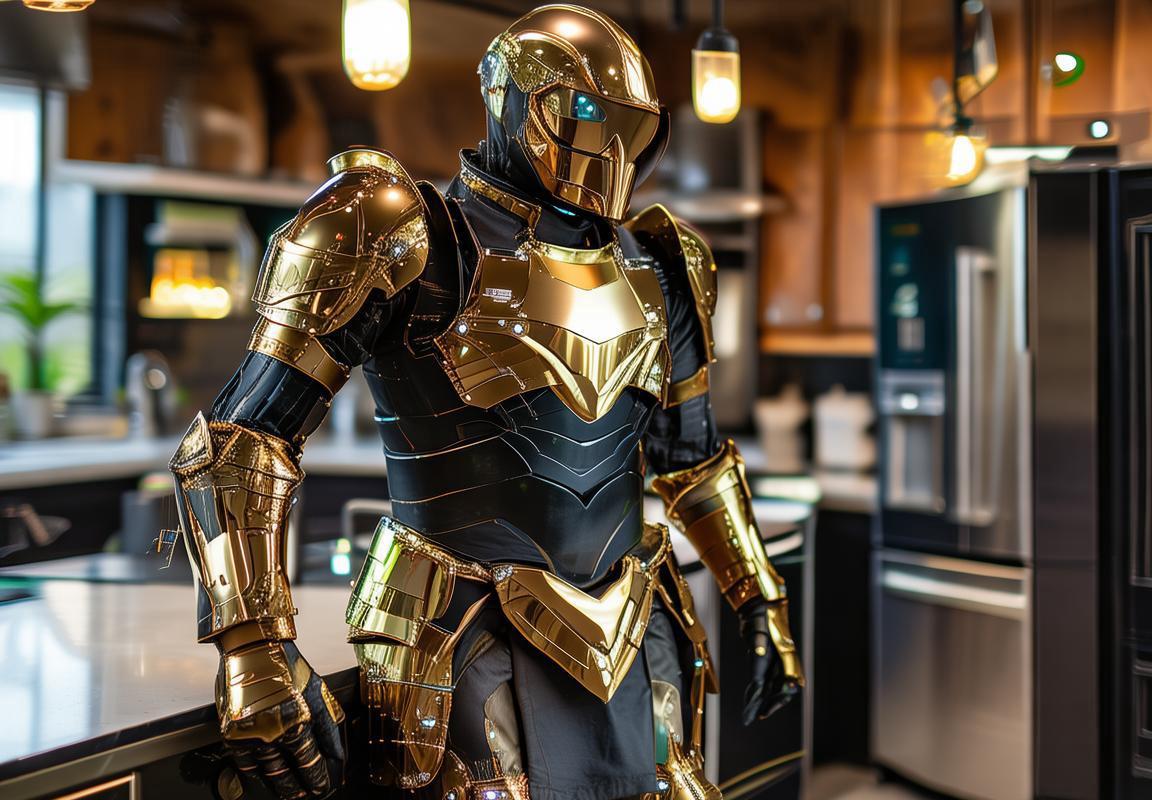
The Impact of Climate Change on Kitchen Appliance Demand
The shift in climate patterns has significantly influenced the demand for kitchen appliances, leading to a surge in products designed to withstand extreme temperatures. From freezing winters to scorching summers, these changes have reshaped consumer needs and the appliance industry.
As temperatures plummet, homeowners in regions like the Scandinavian countries and Eastern Europe find themselves seeking appliances that can operate reliably in sub-zero conditions. Freezers and refrigerators, in particular, must maintain their functionality at -30°C, ensuring that food remains preserved and safe. The demand for such cold-resistant models has seen a marked increase, with manufacturers rushing to innovate and meet these needs.
In North America, the story is somewhat different, though the impact of climate change is no less profound. The rise of extreme cold snaps, often accompanied by power outages, has led to a heightened awareness of the importance of appliances that can maintain their performance during such crises. Smart refrigerators and freezers with advanced insulation and backup power systems have become increasingly popular, as consumers seek to safeguard their food supplies.
The demand for energy-efficient appliances has also surged, as climate change prompts a global shift towards sustainability. Consumers are now more likely to invest in appliances that not only perform well in varying temperatures but also consume less energy. This dual focus on efficiency and resilience has become a cornerstone of the modern kitchen appliance market.
In regions prone to both extreme cold and heat, the need for versatile appliances has become evident. For instance, ovens and stovetops must be able to handle not just the intense cold but also the intense heat that can accompany summer months. This has spurred the development of multi-functional appliances that can adapt to different cooking conditions, offering flexibility and convenience.
The rise of smart appliances has been another response to the changing climate. With the ability to monitor and adjust settings remotely, these devices can help consumers manage their kitchen appliances more effectively, especially during power outages or extreme weather events. The integration of IoT (Internet of Things) technology has made it possible for appliances to provide real-time data on their performance, energy consumption, and even maintenance needs.
Moreover, the impact of climate change on kitchen appliance demand is not limited to the appliances themselves. It extends to the materials used in their construction. As the demand for cold-resistant appliances grows, so does the demand for high-quality, durable materials that can withstand extreme temperatures. This has led to a surge in research and development into new materials and manufacturing techniques.
The global supply chain has also been affected by climate change. The transportation of appliances from factories to stores has become more challenging, with longer delivery times and increased costs. This has forced manufacturers to reconsider their supply chain strategies, looking for ways to reduce dependency on certain regions and to ensure that products can be delivered swiftly and efficiently.
In conclusion, the impact of climate change on kitchen appliance demand is multifaceted. It has driven the need for appliances that can withstand extreme temperatures, encouraged the development of energy-efficient and smart appliances, and prompted innovation in materials and supply chain management. As the climate continues to change, the kitchen appliance industry will undoubtedly continue to evolve, offering solutions that are both sustainable and resilient.
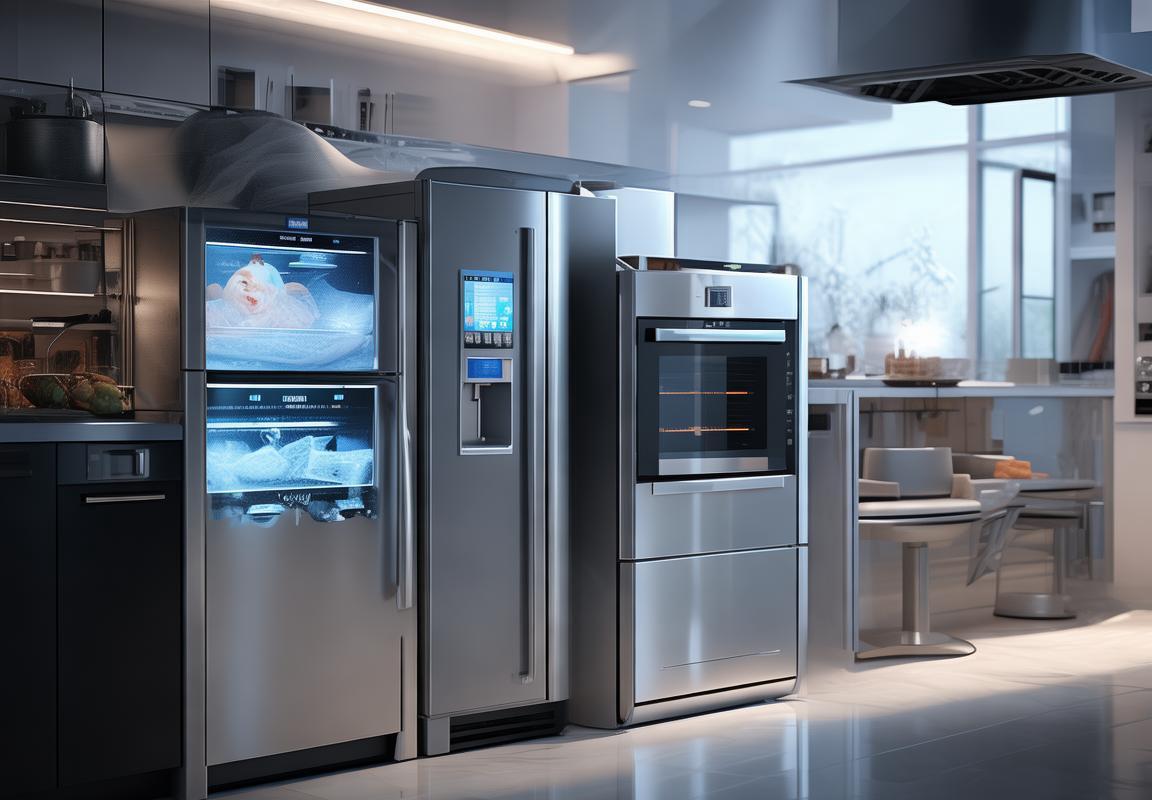
Leading Brands and Their Strategies for -30°C Cold Resistant Models
In the realm of kitchen appliances, brands are not just competing on functionality and design; they’re also striving to meet the demands of a changing climate. The rise of -30°C cold resistant models has prompted several leading brands to innovate and adapt their strategies. Here’s a glimpse into how these brands are navigating this new market segment.
The German appliance giant, Bosch, has long been known for its engineering prowess. With the introduction of their -30°C cold resistant models, they’ve focused on enhancing the durability and efficiency of their refrigerators and freezers. By using advanced insulation materials and reinforced doors, Bosch ensures that these appliances can withstand extreme temperatures, making them a reliable choice for consumers in colder climates.
LG Electronics, a South Korean multinational, has also joined the fray with their own line of cold-resistant appliances. Their approach includes not just the physical resilience of the units but also the integration of smart technology. LG’s refrigerators and ovens can now be controlled remotely, allowing users to adjust settings from the comfort of their homes or even while on vacation, ensuring optimal performance regardless of the weather outside.
Samsung, another Korean electronics giant, has leveraged their expertise in materials science to create -30°C cold resistant models. Their appliances feature triple-layered glass doors that prevent cold air loss, ensuring that food stays fresh longer. Additionally, Samsung has integrated energy-saving features to counteract the increased power consumption that comes with maintaining low temperatures in extreme cold conditions.
Danby, a Canadian appliance manufacturer, has made a name for itself by catering to the needs of Canadian consumers, who often face harsh winters. Their -30°C cold resistant models are designed with robust insulation and high-quality materials to ensure they can operate efficiently even in the coldest environments. Danby’s strategy includes offering a range of sizes and capacities to suit different household needs.
Whirlpool, an American appliance manufacturer, has focused on the importance of energy efficiency in their -30°C cold resistant models. They’ve incorporated variable speed compressors and adaptive defrost systems that adjust to the ambient temperature, reducing energy use and extending the life of the appliance. Whirlpool’s commitment to sustainability is evident in their eco-friendly design choices.
Frigidaire, a brand under the Electrolux Group, has taken a user-centric approach with their -30°C cold resistant appliances. They’ve enhanced the usability with features like easy-to-read digital displays and intuitive controls. Frigidaire’s strategy includes not just the technical aspects but also ensuring that the appliances are a breeze to use, even in the most challenging conditions.
Gorenje, a Slovenian brand known for its European design and innovation, has introduced -30°C cold resistant models that blend aesthetics with functionality. Their appliances are not only designed to withstand extreme cold but also to complement modern kitchen aesthetics. Gorenje’s strategy is to offer a balance between performance and style, appealing to consumers who value both practicality and design.
In the UK, Miele has stepped up with their premium -30°C cold resistant appliances, emphasizing quality and craftsmanship. Miele’s commitment to excellence is reflected in their use of premium materials and the meticulous attention to detail in their engineering. Their strategy is to provide a high-end solution that not only meets the demands of extreme temperatures but also stands out in terms of luxury and reliability.
As the demand for -30°C cold resistant models continues to grow, these leading brands are not only focusing on the technical aspects of their appliances but also on the broader consumer experience. From enhancing energy efficiency to ensuring ease of use, these brands are demonstrating that innovation can come in many forms, all aimed at meeting the evolving needs of consumers in a world that’s increasingly aware of the challenges posed by climate change.
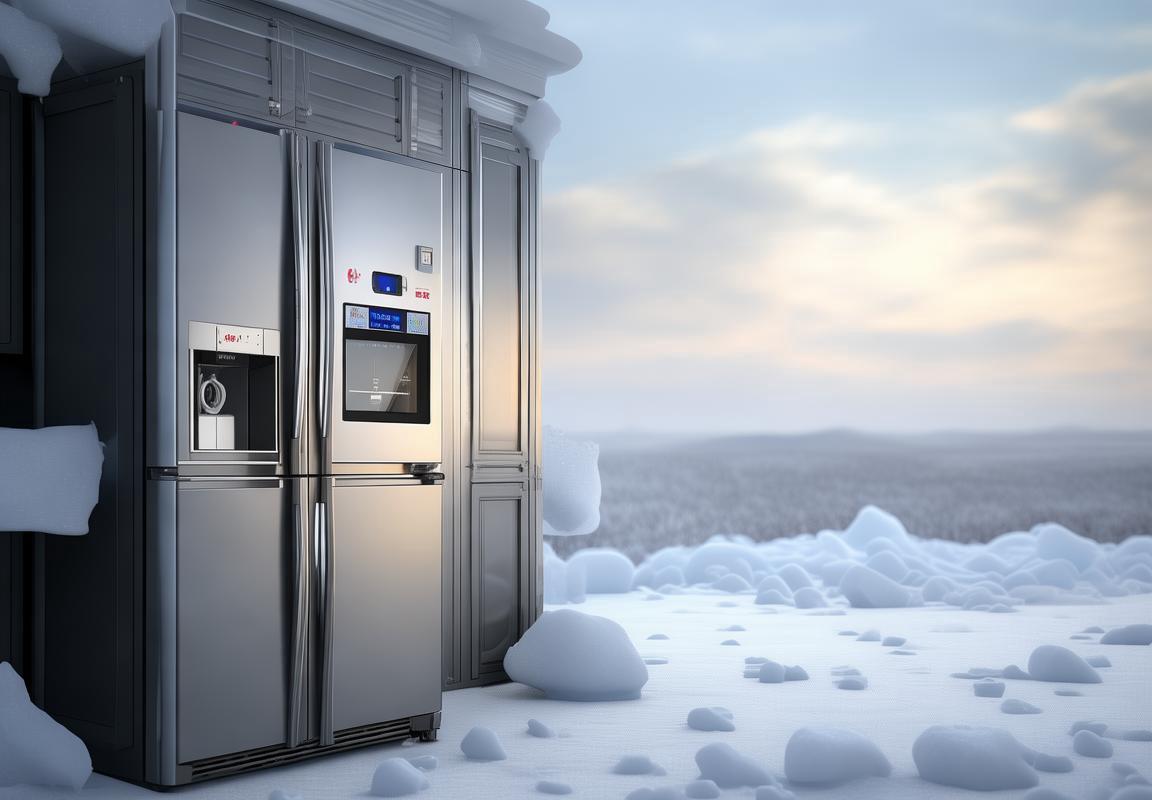
Case Studies: Successful Implementations of -30°C Cold Resistant Appliances
In the quest for kitchen appliances that can withstand extreme temperatures, several brands have successfully implemented -30°C cold resistant models. These case studies highlight their innovative approaches and the outcomes of their efforts.
The German appliance giant, Bosch, has made significant strides in developing -30°C cold resistant refrigerators. Their latest models feature advanced insulation and a robust cooling system that maintains optimal temperatures even in the harshest climates. Customers in regions like Siberia and Alaska have praised the reliability and efficiency of these refrigerators, which have become a staple in their homes.
Another standout example is the South Korean electronics company, LG, which has introduced a line of -30°C cold resistant freezers. These freezers are designed with a unique double-walled structure that prevents cold air from escaping, ensuring that food remains frozen even in sub-zero temperatures. LG’s commitment to sustainability is evident in their use of eco-friendly materials, making these freezers not only durable but also environmentally conscious.
In the Scandinavian market, Electrolux has successfully launched a series of -30°C cold resistant dishwashers. These dishwashers are engineered with a high-quality stainless steel interior that can withstand extreme cold, ensuring that dishes are cleaned effectively in any climate. Electrolux’s focus on user experience is reflected in their intuitive controls and quiet operation, making these dishwashers a favorite among consumers in cold-weather regions.
Japanese appliance manufacturer, Panasonic, has also made a name for itself with its -30°C cold resistant washing machines. These machines are designed with a reinforced drum and a heat pump system that maintains a consistent temperature, even in freezing conditions. Panasonic’s washing machines have been particularly well-received in Japan, where consumers appreciate the brand’s dedication to energy efficiency and eco-friendliness.
In the United States, Whirlpool has introduced a range of -30°C cold resistant ovens. These ovens are built with a triple-insulated glass door that prevents heat loss, allowing for even cooking at low temperatures. Whirlpool’s innovative approach has resulted in a product that is not only reliable but also energy-efficient, appealing to eco-conscious consumers.
The success of these -30°C cold resistant appliances can be attributed to several factors. One key element is the use of high-quality materials that can withstand extreme temperatures without compromising on performance. Another factor is the integration of advanced technology, such as heat pumps and double-walled insulation, which ensures that the appliances maintain their functionality in cold environments.
Furthermore, these brands have taken into account the specific needs of consumers in cold-weather regions. By offering appliances that can operate reliably in -30°C temperatures, they have addressed a significant gap in the market. This focus on customer satisfaction has translated into strong sales and a loyal customer base.
In conclusion, the case studies of successful implementations of -30°C cold resistant appliances demonstrate the importance of innovation and customer-centric design. By meeting the unique demands of consumers in extreme climates, these brands have not only expanded their market reach but also set new standards for appliance durability and efficiency.
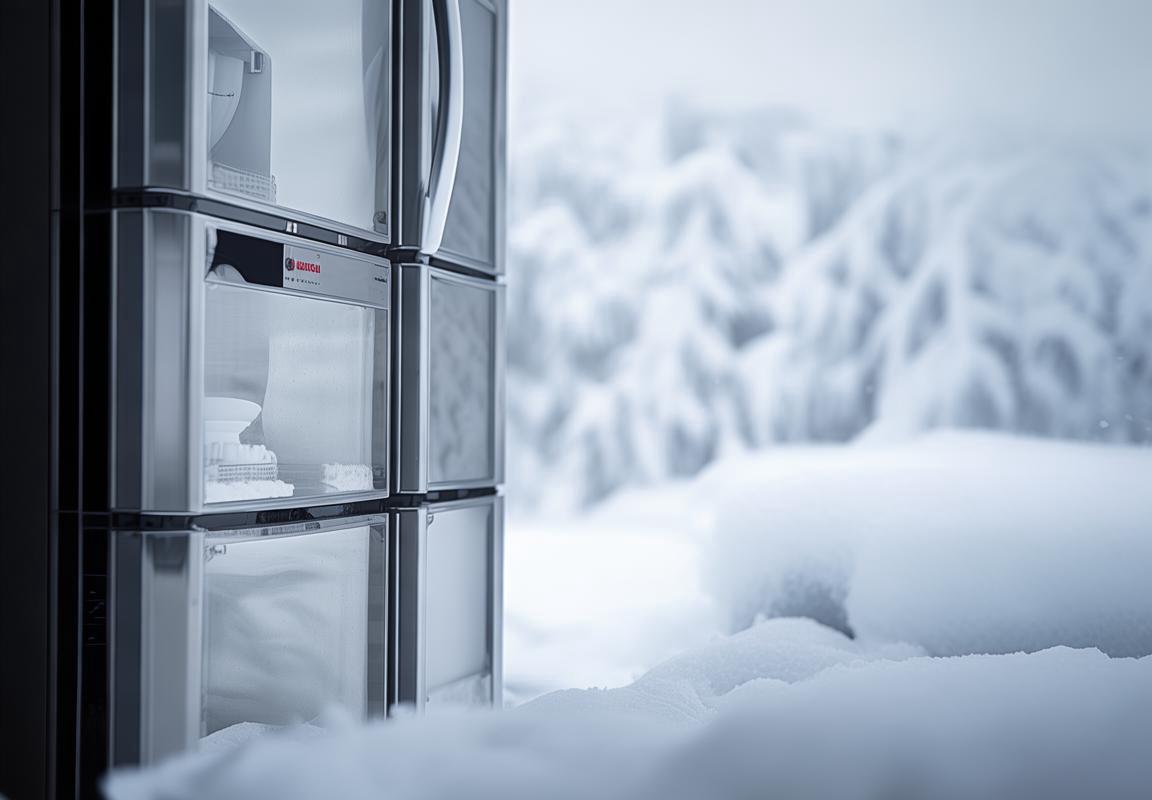
Challenges and Solutions in Manufacturing -30°C Cold Resistant Appliances
The development of -30°C cold-resistant kitchen appliances is not without its set of challenges. Here’s a look into some of the key obstacles and innovative solutions that manufacturers are employing to create these robust appliances.
Materials selection is crucial in the creation of -30°C cold-resistant appliances. The cold-resistant materials must be able to withstand extreme temperatures without losing their structural integrity. Aluminum alloys, for instance, are often chosen for their high thermal conductivity and durability. However, even these materials can fail under prolonged exposure to sub-zero temperatures. Manufacturers are investing in new alloys and composites that offer enhanced resistance to cracking and breaking.
One significant challenge is the insulation. Traditional insulation materials can lose their effectiveness at such low temperatures, leading to increased energy consumption and reduced efficiency. To combat this, some companies are exploring phase change materials (PCMs) that can maintain a consistent temperature by absorbing and releasing heat. These materials can help maintain the appliance’s internal temperature, even when external conditions plummet.
The cooling systems within these appliances also face unique demands. Traditional refrigeration units are not designed to function in extreme cold, which can lead to compressor failure and inefficient cooling. Manufacturers are adapting and improving compressor technology, using materials that can handle the stress of low temperatures without degradation. Additionally, some are exploring the use of solid-state cooling solutions, which can be more reliable and energy-efficient in harsh conditions.
The electronic components within these appliances are another area of concern. Batteries, sensors, and other electronic parts must be able to operate reliably at temperatures far below freezing. This requires the use of specialized electronics designed for cold environments. Companies are investing in research and development to create new materials and designs that can withstand the cold without compromising performance.
Safety features are paramount in -30°C cold-resistant appliances. These appliances must be equipped with sensors that can detect malfunctions or temperature extremes, preventing damage and potential hazards. This means developing new types of sensors that can operate in sub-zero conditions. Companies are also looking into improved safety protocols, including automated shutdown systems to protect users and the appliance itself.
In terms of design, -30°C cold-resistant appliances must be robust yet user-friendly. The control panels and interfaces need to be intuitive and durable, capable of functioning in cold, damp environments. This often means using materials and coatings that are resistant to condensation and corrosion. Designers are also considering ergonomics, ensuring that the appliances are easy to use and maintain, even in extreme conditions.
Despite these challenges, manufacturers are finding innovative solutions. One such solution is the use of vacuum insulation panels (VIPs), which are known for their exceptional thermal resistance. These panels can significantly reduce the amount of heat transferred, making the appliances more energy-efficient.
Another breakthrough is the adoption of nanotechnology. Nanoparticles are being integrated into the construction of these appliances to improve their thermal properties. These nanoparticles can create a barrier that reflects heat back into the appliance, reducing the need for additional insulation.
In terms of manufacturing processes, companies are investing in advanced welding techniques that can create strong, leak-proof joints in the cold-resistant materials. This is critical, as any weakness in the construction could lead to failure in extreme conditions.
Furthermore, the testing and quality control processes for -30°C cold-resistant appliances are rigorous. Manufacturers must ensure that every unit meets the highest standards of performance and safety. This involves extensive testing in controlled cold environments to simulate real-world use.
The challenges in manufacturing -30°C cold-resistant appliances are significant, but the solutions are equally innovative. From materials science to design and testing, manufacturers are pushing the boundaries of what’s possible to deliver appliances that can withstand the harshest conditions. As climate change continues to present new challenges, these solutions are not only critical for consumer needs but also for the broader sustainability of the kitchen appliance industry.
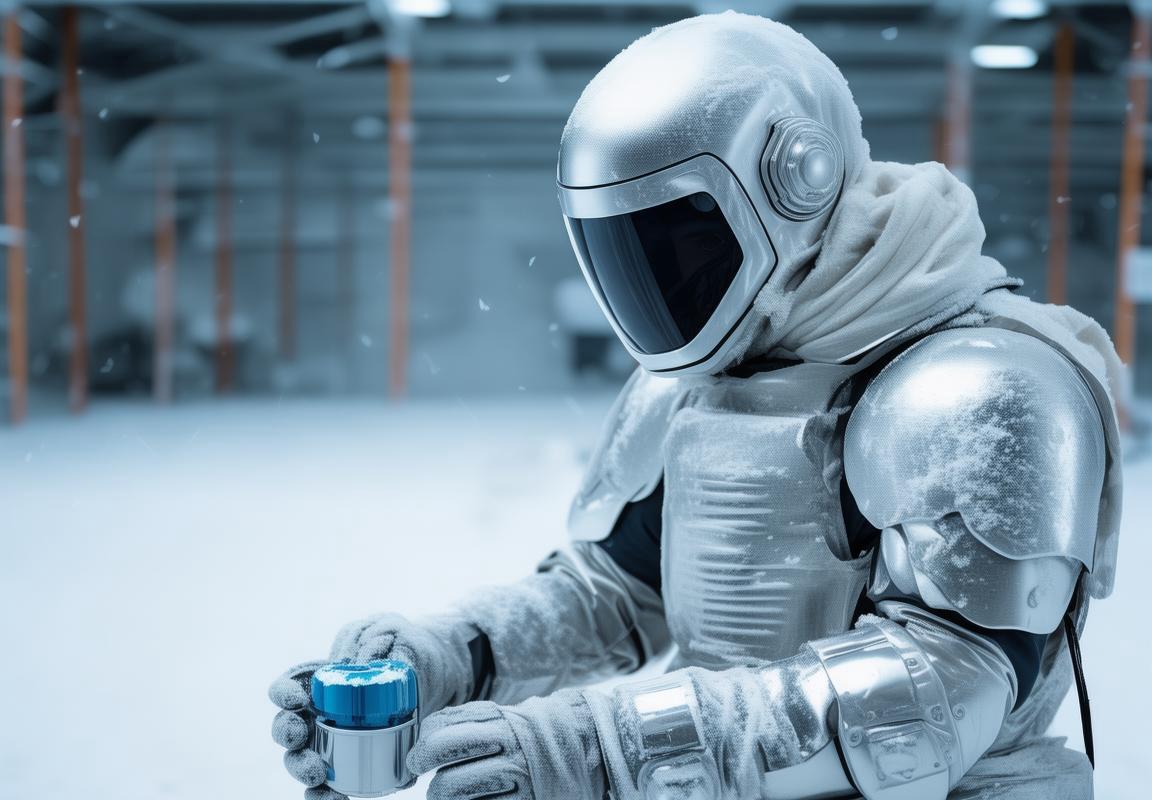
Future Outlook: Predictions for the Growth of the -30°C Cold Resistant Kitchen Appliance Market
The shift towards colder climates, coupled with evolving consumer needs, has spurred a demand for appliances that can withstand extreme temperatures. In the realm of kitchen appliances, the development of -30°C cold resistant models has emerged as a crucial innovation. These appliances are not just about surviving the cold but are engineered to perform optimally in environments where traditional appliances would falter. Here’s a look at some of the challenges and solutions in manufacturing these resilient kitchen companions.
Materials science has played a pivotal role in the creation of -30°C cold resistant appliances. High-grade stainless steel and advanced plastics are commonly used to ensure durability and flexibility in conditions. These materials must maintain their integrity without cracking or losing their shape, which requires precise engineering and rigorous testing.
One challenge in manufacturing lies in the thermal management of these appliances. The insulation must be up to par to prevent the appliance from becoming a cold reservoir. Specialized foams and double-walled designs are employed to maintain the internal temperature of the appliance, whether it’s a refrigerator, freezer, or oven.
Another hurdle is the electrical components. Conventional circuits can malfunction in extreme cold, so designers must opt for temperature-resistant wiring and electronics. This often involves using materials like polyimide, which can withstand both low temperatures and the potential for condensation.
In terms of assembly, precision is paramount. The tight tolerances required for -30°C appliances mean that even the smallest misalignment can lead to performance issues. Automation and computer-aided design (CAD) have become essential tools in ensuring that each part fits seamlessly within the appliance’s framework.
Manufacturers also need to address the issue of condensation. In cold environments, moisture can accumulate on the appliance’s surfaces, potentially leading to corrosion. Techniques such as applying a special coating or incorporating a drainage system help mitigate this risk.
The energy efficiency of -30°C cold resistant appliances is another critical factor. These appliances must maintain energy consumption standards despite the extreme conditions. This involves optimizing motor efficiency and insulating materials to reduce heat loss.
Despite these challenges, there are innovative solutions being implemented. For instance, some brands are integrating smart technology into their appliances. This not only allows for better monitoring and control but also ensures that the appliance can adapt to the cold environment, maintaining optimal performance.
Case in point, the “Extreme Cold” line from Arctic Kitchen Appliances has been a hit. Their freezers use a multi-layered insulation system that is both airtight and heat-trapping, while their refrigerators employ an advanced cooling system that prevents frost buildup. These appliances have been tested in temperatures as low as -40°C and have proven to be highly reliable.
Moreover, companies are investing in research and development to create new materials and technologies. For example, some are exploring the use of phase-change materials (PCMs) which can absorb and store heat, thus reducing the load on the appliance’s cooling system.
In terms of market trends, there is a growing segment of consumers who are either living in cold climates or are planning to move to areas with extreme weather. This demographic is willing to invest in quality appliances that can handle the rigors of cold environments.
Furthermore, the rise of outdoor kitchens and entertaining spaces in cold regions has also contributed to the demand for cold-resistant appliances. People are looking for ways to enjoy their outdoor spaces year-round, and these appliances provide the functionality needed to do so.
Looking ahead, the future of -30°C cold resistant kitchen appliances seems promising. As climate change continues to shift the distribution of cold weather, the need for these appliances will likely increase. Manufacturers are already beginning to anticipate this trend by expanding their product lines and investing in sustainable materials.
The key to continued growth in this market will be innovation and adaptability. As consumer preferences evolve and new challenges arise, companies will need to stay ahead of the curve. This means investing in R&D, collaborating with material scientists, and understanding the specific needs of consumers in cold climates.
In conclusion, the challenges in manufacturing -30°C cold resistant appliances are significant, but so are the opportunities. By focusing on materials, design, and technology, manufacturers can create products that not only withstand the cold but also enhance the cooking experience for those living in extreme climates.